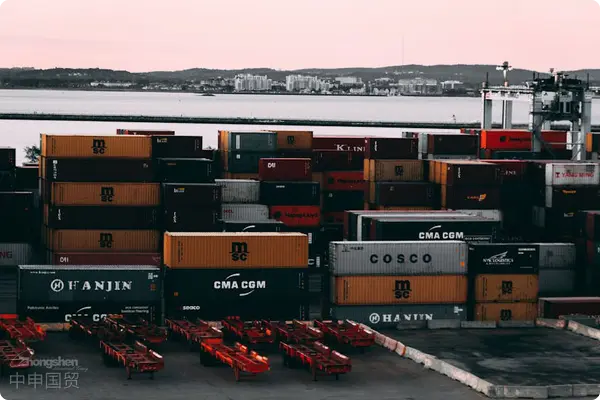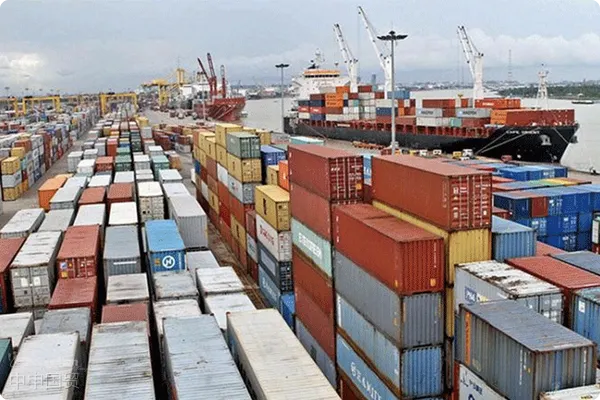- Shanghai Zhongshen International Trade Co., Ltd. - Two decades of trade agency expertise.
- Service Hotline: 139 1787 2118
The compliance of packaging for exporting dangerous goods plays a vital role in ensuring life and property safety. Dangerous goods—including but not limited to explosives, flammables, toxics, infectious substances, corrosives, and radioactive materials—have special and strict requirements for packaging, stowage, segregation, handling, management, transport conditions, and emergency measures. This article, based on a 2022 case where H Customs identified non-compliant packaging for Company As exported dangerous goods, reviews relevant legal regulations and corporate responsibilities to enhance companies regulatory awareness and accountability.

Basic Information
On July 26, 2022, during the inspection of export dangerous goods packaging usage certification, H Customs discovered that the PI numbers (production batch numbers) marked on the packaging containers of two batches of dangerous goods declared by Company A did not match the marks on the sample sheets of the Inspection Results of Performance of Packaging for Entry-Exit Goods provided. Additionally, the height of the UN mark letters and numbers on the open-head steel drums for these two batches was only 3mm, which clearly did not comply with the regulations for marking height on containers with a capacity of 30L or weight of 30kg or less for export dangerous goods packaging. H Customs determined that the packaging usage certification for these two batches of dangerous goods was unqualified and prohibited their export.
Issues and Analysis
What are the requirements for dangerous goods packaging marks?
According to SN/T 0370.1-2021 Inspection Procedures for Packaging of Export Dangerous Goods - Part 1: General Provisions, each container shall be marked with a durable, easily recognizable, appropriately located and sized mark relative to the container. For packages with a total weight exceeding 30 kg, the mark or mark attachment shall be marked on the top or side of the container, and the height of letters, numbers and symbols shall be not less than 12 mm. On containers with a capacity of 30 L or a weight of 30 kg or less, the letters, numbers and symbols shall be at least 6 mm high. For containers with a capacity of 5 L or a weight of 5 kg or less, the size of the mark shall be appropriate.
In this case, the dangerous goods packaging consists of 24L open-head steel drums, and the letters, numbers, and symbols should be at least 6mm high.
Dangerous goods packaging marks should indicate:
The United Nations container symbol. This symbol is only used to certify that the container complies with the relevant requirements in Chapter 6.1 of the United Nations Recommendations on the Transport of Dangerous Goods, Model Regulations. For embossed metal containers, the symbol may be represented by the uppercase letters UN.
The code indicating the type of container.
A two-part number:
1) A letter indicating the packaging category for which the design type has successfully passed the tests.
2) The relative density (rounded to the first decimal place), indicating that the design type of the container intended to carry liquids without inner packaging has been tested at this relative density; if the relative density does not exceed 1.2, this part may be omitted. For containers intended to carry solids or inner packaging, the maximum gross weight (rounded up to the nearest whole number) in kg should be indicated.
The letter S to indicate that the container is intended for the transport of solids or inner packaging, or the test pressure (rounded to the nearest 10 kPa) to indicate the hydraulic test that the container (except for combination packaging) has successfully passed.
The last two digits of the year of manufacture. Plastic containers of types 1H1, 1H2, 3H1, and 3H2 should also appropriately indicate the month of manufacture.
The country code of manufacture, with Chinas code being the uppercase letters CN.
The manufacturers code for the container, which should at least reflect the customs agency information of the region where the manufacturer is located. The regional code table for direct customs offices is provided in Appendix B.
The production batch.
How should enterprises apply for export dangerous goods packaging usage certification? What documents are required?
Application process:Enterprises should log in to the China International Trade Single Window or the Internet + Customs integrated platform, enter the Commodity Inspection section, fill in the application information for declaration, and print the Application Form for Inspection of Packaging for Entry-Exit Goods. After successful online declaration, they should bring the application materials to the local customs office to apply for the Certificate of Usage Appraisal for Transport Packaging of Export Dangerous Goods.
The main application materials include:The Application Form for Inspection of Packaging for Entry-Exit Goods, Inspection Results of Performance of Packaging for Entry-Exit Goods, Factory Inspection Qualification Record or Product Review Statement of the Manufacturer, Sales Contract for Export Dangerous Goods, etc.
When accepting applications for export dangerous goods packaging usage certification, customs will review the necessary documents provided by the enterprise, such as the sales contract (sales confirmation or correspondence), invoice, packing list, and the Inspection Results of Performance of Packaging for Entry-Exit Goods. For packaging containers used for the first time, a compatibility test report or self-declaration of compatibility between the contents and the packaging for more than six months should be provided. Customs will examine whether the declaration materials are complete and standardized, and for incomplete or non-standard materials, the declarant or their agent will be required to make corrections.foreign tradeCustoms will conduct usage appraisals in accordance with the technical specifications for the inspection of export dangerous goods packaging. During the usage appraisal, customs officers will verify the consistency of the goods variety, quantity, specifications, marks, and packaging methods with the declaration materials; the packaging containers must be sturdy and intact; the material, type, and packaging method of the containers should be suitable for the nature of the intended dangerous goods.
If the inspection and appraisal determine that the packaging is qualified, or if the enterprise rectifies the issues and passes a re-inspection, the Certificate of Usage Appraisal for Transport Packaging of Export Dangerous Goods will be issued. If the packaging is unqualified, it will be judged as unqualified according to the relevant requirements.
If the inspection determines the goods are qualified, or if the company rectifies and passes re-inspection, a Result Certificate for the Use of Transport Packaging for Export Dangerous Goods will be issued. If unqualified, it will be judged as non-compliant according to relevant requirements.
In summary, the packaging of hazardous goods for export must comply with relevant legal regulations and standards, while enterprises also bear significant social responsibilities in this process. For companies involved in the production, packaging, and transportation of hazardous goods, in addition to meeting commercial objectives, they must always maintain a high sense of responsibility toward people and society.
The above content is sourced from the customs.ZhongShen International TradeAs a one - stop importExport Representationservice provider, it can provide customizedimport and exportsolutions for various industries. If you need foreign trade import and export agency services, welcome to contact our company for business consultation. The consultation hotline is 139 - 1787 - 2118.
Related Recommendations
? 2025. All Rights Reserved. Shanghai ICP No. 2023007705-2  PSB Record: Shanghai No.31011502009912
PSB Record: Shanghai No.31011502009912










